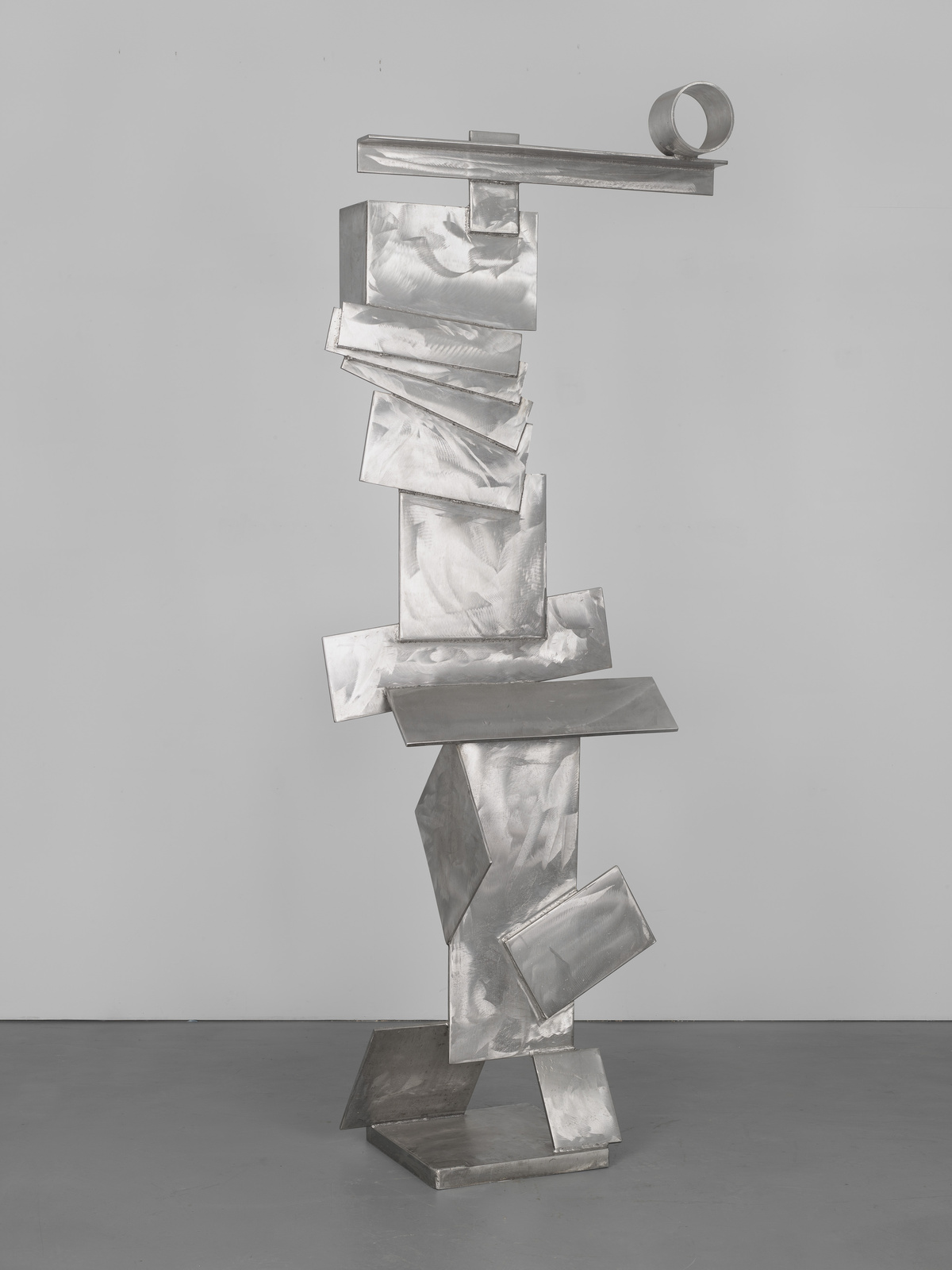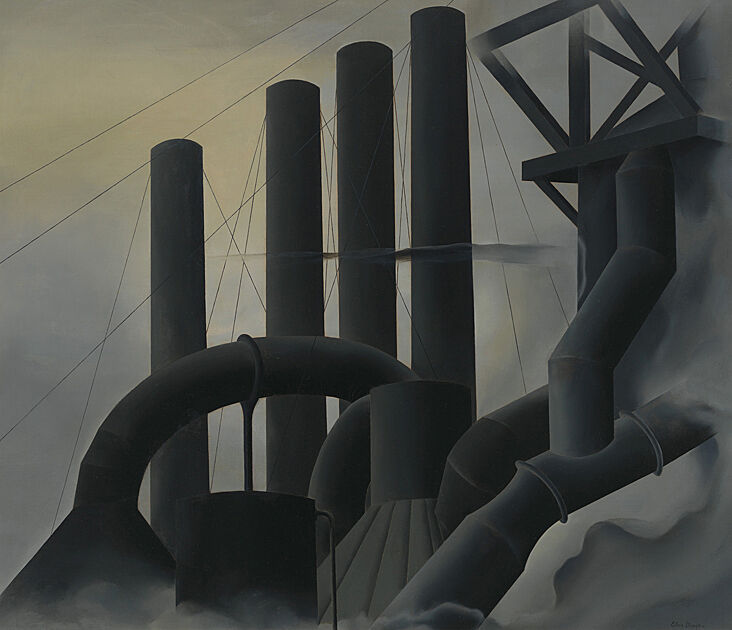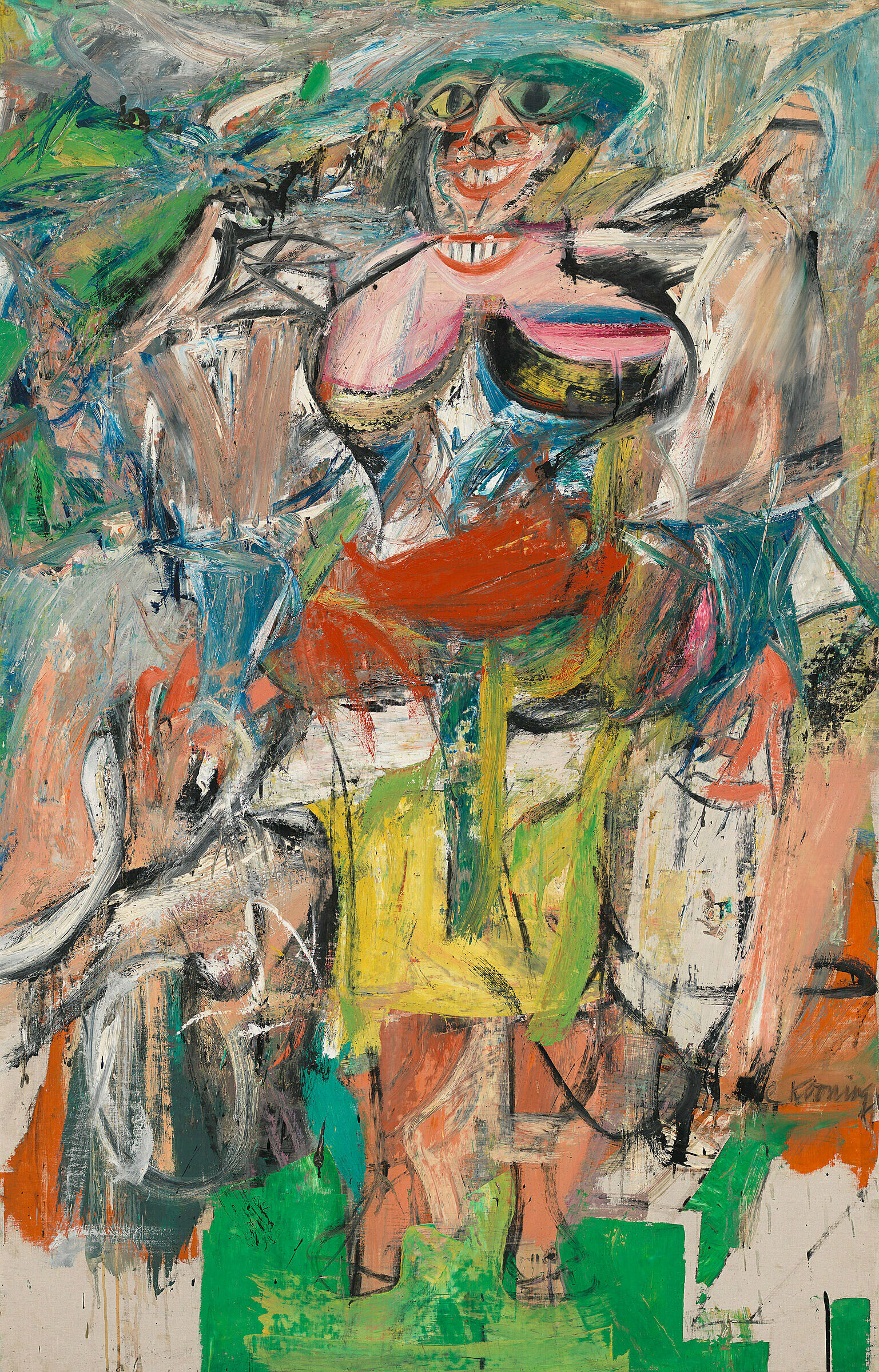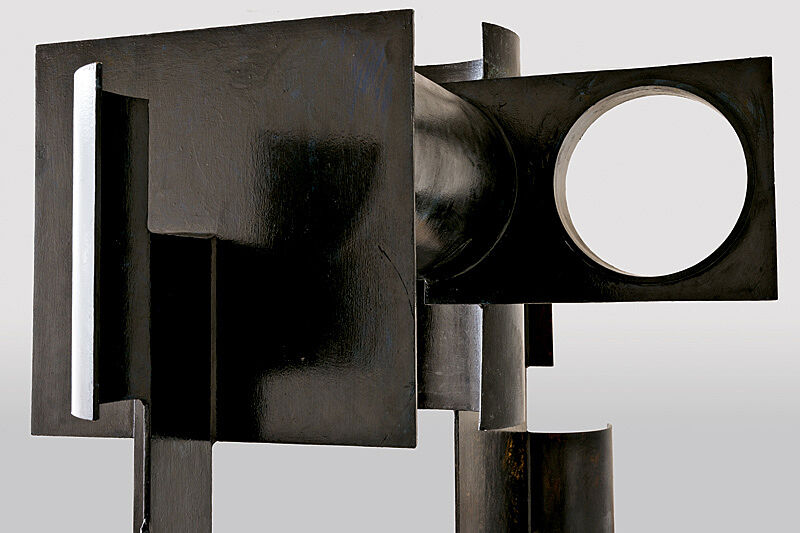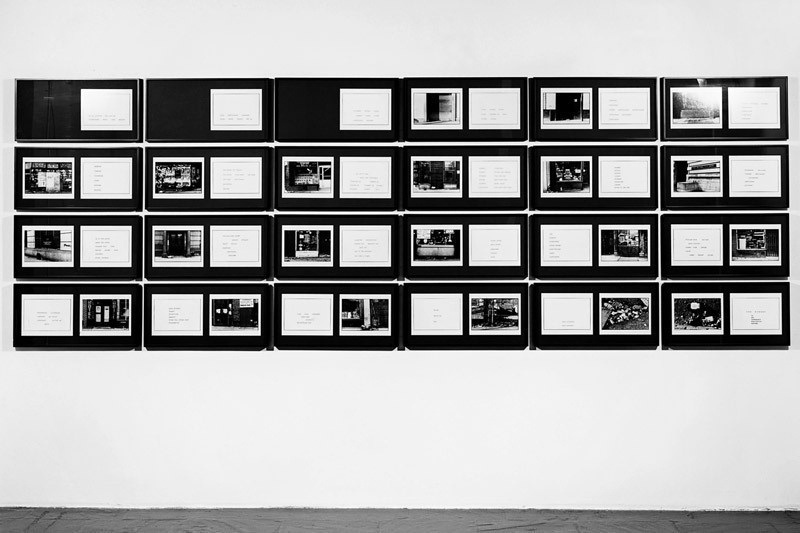Narrator: To make Lectern Sentinel—and the other sculptures in this exhibition—Smith welded metal elements together. For centuries, sculptors had carved or molded sculpture. Smith’s work is constructed. It’s an approach to sculpture that comes out of collage, a technique first employed by Pablo Picasso and Georges Braque in 1912.
Compared to traditional artworks, collage and constructed sculpture feel provisional. We can see how all of the pieces were put together, and we can imagine taking them apart. A skeptical, experimental spirit is built into the techniques—and this spirit pervades Smith’s work.
Still, while Smith questioned sculptural tradition, he didn’t reject it. Welding may have allowed him to compose a work out of disparate parts. But in chemical terms, welding creates a single, fused piece of metal. The sculpture is tremendously strong and stable. Smith has dramatized its weight with the long, firm horizontal that sits atop the shifting column.
Peter Stevens: By putting that firm, horizontal top to the sculpture, he is giving us a clear structural—one of the few points of reference that are not about motion, that is about a kind of stasis, that's about staying still, a kind of calm.
Narrator: Peter Stevens is director of the David Smith Estate.
Peter Stevens: And that is what a sentinel is. A sentinel stands still and watches and is not an active participant in its environment. It is watching. That little circle that is created by the pipe, from one view it becomes an open, very thinly drawn circle. And then, as you walk around it, it becomes closed.
So it's like an eye that opens and closes, that is watching us. So the sculpture turns the tables on the viewer. Instead of just simply being an object that we look at, it is also, in a sense, returning our gaze and creating this kind of almost solemn presence that I think is what the Sentinel meant to Smith.
Michael Brenson: He wanted to give people something that they could respond to, some kind of associative trigger.
Narrator: Michael Brenson is a writer and critic. He’s writing a biography of David Smith.
Michael Brenson: And that trigger very often for him was connected with certain ceremonial or ritual purposes. He never explained his work. He wrote a lot. He talked a lot. But he was extremely reluctant to explain his work. I think one of the reasons for that is that he was so committed, almost ideologically committed, to the freedom of interpretation of people in front of it.

